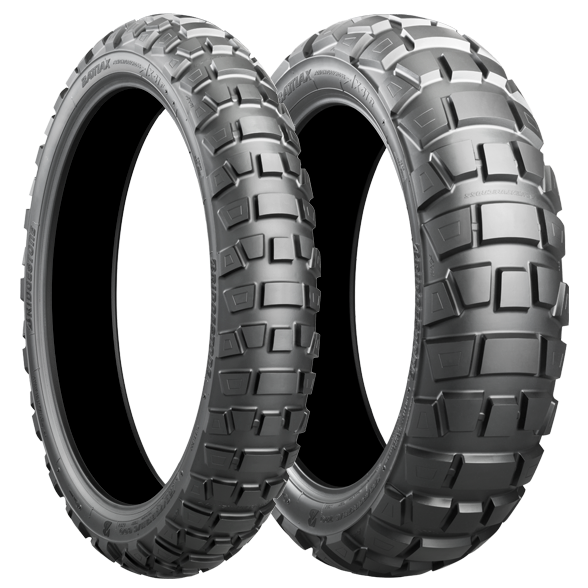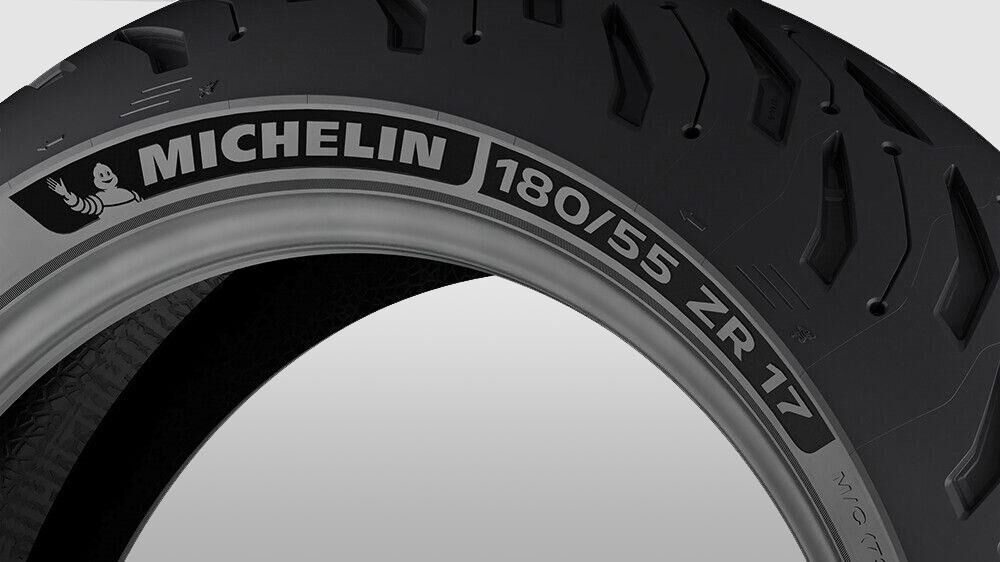All About the Important Motorbike Tyre Overview for Optimum Bike Upkeep and Performance
The Essential Bike Tyre Overview acts as a vital resource for cyclists seeking to boost their bike's efficiency and safety. motorcycle tyre guide. It offers understandings into numerous tyre kinds and requirements that influence dealing with and toughness. In addition, comprehending appropriate upkeep techniques can substantially extend tyre life. Nonetheless, numerous cyclists ignore vital variables that affect their riding experience. Discovering these facets can result in notified decisions that eventually boost both safety and pleasure when driving
Comprehending Motorbike Tyre Types
When choosing bike tyres, recognizing the numerous kinds available is essential for peak performance and safety. Motorcyclists run into various tire classifications, each created for specific riding styles and conditions. For example, sport tyres stress grip and responsiveness, making them suitable for high-performance bikes and track use. Exploring tyres, on the various other hand, concentrate on durability and convenience, ideal for long-distance experiences. Off-road tires include aggressive step patterns, supplying traction on irregular surfaces, while dual-sport tyres use flexibility for cyclists that change between on-road and off-road conditions.Additionally, cruiser tyres are made for stability and a smooth adventure, dealing with the unique requirements of cruisers and visiting bikes. Recognizing these groups allows motorcyclists to choose tires that straighten with their riding routines and environmental conditions, inevitably improving both safety and efficiency. Each type plays an important function in guaranteeing a premium riding experience customized to the specific motorcyclist's requirements.
Secret Tyre Specifications Discussed
Choosing the suitable motorcycle tires entails even more than just understanding the various kinds; it likewise requires experience with essential requirements that influence performance and safety. Secret requirements consist of tire size, which is usually expressed as a series of numbers showing width, facet ratio, and rim diameter. This code is essential for making certain compatibility with the motorcycle.Another crucial specification is the load index, indicating the maximum weight a tyre can sustain. The speed rating represents the optimal speed a tyre can safely handle, important for performance enthusiasts.Additionally, walk pattern and rubber compound impact hold, security, and put on qualities. Tyres with a softer compound tend to supply better hold yet wear faster, while tougher substances last longer yet might compromise grip. Comprehending these specifications enables cyclists to make enlightened choices, enhancing both their safety and riding experience.
How to Pick the Right Tyres for Your Bike
Just how can a cyclist guarantee they choose the appropriate tyres for their motorcycle? Choosing the ideal tyres includes comprehending the particular needs based on riding style, surface, and climate problems. Cyclists must first consult the motorcycle's guidebook to recognize suggested tyre sizes and specifications.Next, they must review the sort of riding they intend to do-- whether it's commuting, exploring, or off-road. Each group has distinct tire layouts tailored for optimal performance.Additionally, cyclists ought to evaluate tread patterns; much deeper treads supply better grip in damp problems, while shallower footsteps enhance stability on dry surfaces.Lastly, it is important to take a look at the tyre's construction and product, as these elements affect sturdiness and handling (motorcycle tyre guide). By examining these elements carefully, a cyclist can with confidence pick tyres that enhance safety and security, performance, and overall riding experience
The Importance of Tire Stress and Maintenance
Tire stress is a significant aspect of motorcycle upkeep that directly influences safety and security and performance. Maintaining the proper tyre pressure assurances ideal contact with the road, improving grasp and security during trips. Under-inflated tyres can result in increased rolling resistance, leading to inadequate gas effectiveness and excessive wear on the tyres. On the other hand, over-inflated tires might create a rough trip and decrease traction, specifically in damp conditions.Regularly monitoring tyre pressure, preferably before each trip, is essential to preserving the motorbike's total performance. Cyclists must refer to the producer's specifications for the advised pressure levels. Additionally, checking tyre condition and adjusting stress according to load and riding problems is crucial for security. Appropriate tyre maintenance adds to prolonged tyre life-span, better handling, and boosted stopping efficiency. Ultimately, consistent attention to tyre pressure and maintenance is essential for ensuring a satisfying and risk-free riding experience.

Acknowledging Indications of Tyre Wear and Damages
Identifying indications of tire wear and damages is crucial for maintaining motorbike security and efficiency. Trick indications consist of reviewing step depth and carrying out an extensive visual examination for any kind of noticeable damages. Addressing these factors without delay can avoid more problems when traveling.
Walk Deepness Analysis
As cyclists take to the roads, the importance of reviewing walk deepness can not be overstated, considering that put on or harmed tires can greatly influence safety and security and efficiency. Walk depth straight influences traction, braking range, and cornering stability. To analyze tread depth, cyclists ought to utilize a walk depth scale, measuring the grooves at numerous factors throughout the tire. A depth of 2mm or much less indicates considerable wear and demands instant replacement. Furthermore, bikers can use the "dime test" by putting a coin into the tread; if the top of Lincoln's head shows up, the tire is as well put on. Regular checks ensure peak grasp on diverse road problems, advertising a more secure riding experience while click now enhancing the overall handling of the motorcycle.
Visual Damages Examination
Checking bike tires for visual damages is vital for keeping safety when traveling. Riders must frequently check out tyres for indicators of wear such as splits, protrudes, or leaks. Irregular wear patterns might indicate placement concerns or inappropriate rising cost of living, leading to endangered performance. Furthermore, looking for foreign items embedded in the walk can protect against potential blowouts. Bikers ought to pay close focus to the sidewalls, as any kind of cuts or abrasions can compromise the tyre's structure. Making sure that the step is without excessive wear is essential for optimal grasp. Regular visual assessments not just improve safety and security but additionally extend the life of the tires, guaranteeing a smoother and more dependable riding experience. Prompt detection of damages can prevent pricey repair services and accidents.
Seasonal Tire Factors To Consider for Various Riding Conditions
When considering motorbike tires, seasonal problems play a vital duty in performance. In wet climate, tires developed for improved hold and water variation become important for safety. Furthermore, winter riding requires specific tyre attributes to ensure peak traction on cool, potentially icy surfaces.

Wet Weather Condition Performance
Wet weather present one-of-a-kind obstacles for motorcyclists, making the selection of tyres important for security and performance. Tyres created for wet weather condition commonly feature deeper treads and specialized rubber substances that improve grip on unsafe surfaces. These tyres are engineered to carry water away, minimizing the danger of aquaplaning and improving security throughout rainfall. Bikers must think about tyres with a balanced design, offering both traction and durability in wet conditions. In addition, maintaining correct tire pressure is vital, as under-inflated tires can endanger performance. When encountered with rain-soaked roads, routine inspections for wear and damages are needed to ensure peak feature. Choosing ideal wet-weather tires eventually adds to a safer and more satisfying riding experience.
Winter Season Tyre Demands
Riding in winter months problems poses distinct challenges that require specific tire needs to ensure safety and security and efficiency. Winter motorbike tires are designed with much deeper treads and softer rubber substances, offering enhanced grip on chilly and slippery surfaces. This is essential for maintaining traction on ice, snow, and damp roads. In addition, winter months tires typically include a special step pattern that aids channel water away, lowering the risk of aquaplaning. Cyclists should likewise why not try these out take into consideration the tire's temperature level resilience, as efficiency can reduce in extreme cold. It is essential to consistently examine tyre stress, as it can drop substantially in reduced temperature levels. By selecting the suitable winter tires, motorcyclists can browse rough conditions with better confidence and security, ensuring a safer riding experience.
Tips for Appropriate Tire Storage Space and Long Life
Proper tire storage space is important for preserving their durability and performance gradually, as disregarding this facet can cause early wear and tear. To guarantee optimal storage space, it is vital to maintain tyres in a great, completely dry setting far from direct sunlight and resources of warm, such as radiators or heating systems. Extreme heat can trigger rubber compounds to damage down, compromising the tire's integrity.Additionally, tires need to be stored upright or stacked horizontally, relying on their type. If piled, it is recommended to revolve them periodically to avoid level areas. Appropriate rising cost of living is likewise crucial; tires ought to be blown up to the supplier's suggested pressure to prevent deformation.Lastly, it is advantageous to cover tyres with a safety product to shield them from dust and pollutants. Complying with these ideas will certainly help extend the life of motorbike tyres, ensuring they remain secure and reliable for usage when the riding season returns to.
Frequently Asked Questions
How Commonly Should I Change My Bike Tyres?

Can I Mix Different Tyre Brands on My Motorbike?
Blending different tyre brand names on a motorbike is typically not suggested. Variations in step patterns, rubber compounds, and efficiency qualities can bring about unpredictable handling and endangered security, potentially enhancing the risk of mishaps.
What Is the Lifespan of a Motorcycle Tire?
The life-span of a motorbike tyre commonly varies from 5,000 to index 15,000 miles, influenced by factors such as riding design, surface, and tire maintenance. Regular evaluations can assist assure peak efficiency and safety and security throughout their use.
Just how Do I Take Care Of Old Motorcycle Tyres?
When throwing away old bike tyres, they need to be taken to designated recycling facilities. Many neighborhood waste monitoring solutions also provide tire disposal programs, ensuring eco-friendly handling and conformity with local policies relating to tyre waste.
Exist Any Kind Of Tire Service Warranties Offered for Motorbikes?
Numerous motorcycle tyre manufacturers provide warranties that cover flaws in material and craftsmanship. The specifics vary by brand name and version, so it's vital for bikers to evaluate private warranty terms before acquiring brand-new tyres. Off-road tires feature hostile walk patterns, providing traction on unequal surfaces, while dual-sport tyres provide versatility for riders that change in between on-road and off-road conditions.Additionally, cruiser tyres are created for security and a smooth trip, catering to the special needs of cruisers and touring bikes. Each category has unique tyre designs customized for peak performance.Additionally, bikers ought to analyze tread patterns; deeper treads supply much better hold in damp conditions, while shallower treads enhance security on dry surfaces.Lastly, it is essential to take a look at the tire's building and construction and product, as these variables affect longevity and handling. Appropriate tyre upkeep contributes to expanded tyre life-span, better handling, and enhanced braking performance. Proper inflation is also vital; tyres should be inflated to the manufacturer's recommended pressure to stay clear of deformation.Lastly, it is helpful to cover tires with a safety material to shield them from dirt and pollutants. The life expectancy of a bike tyre normally varies from 5,000 to 15,000 miles, influenced by variables such as riding style, tyre, and terrain upkeep.
Comments on “How to match your bike and riding style using the motorcycle tyre guide”